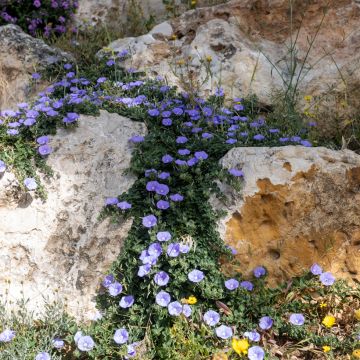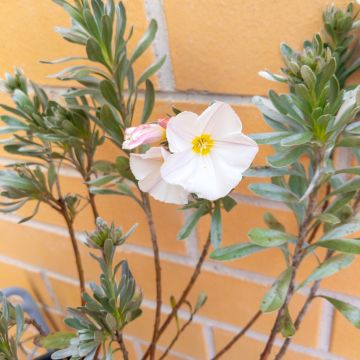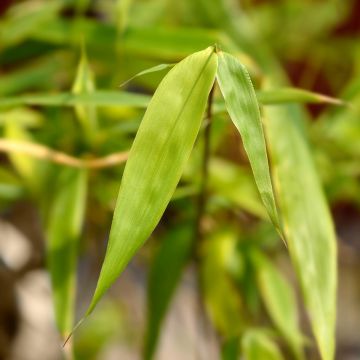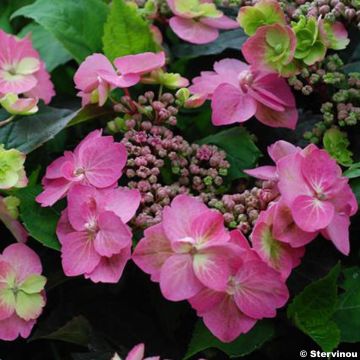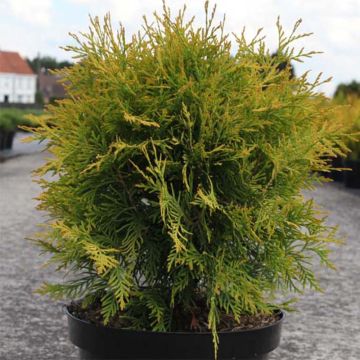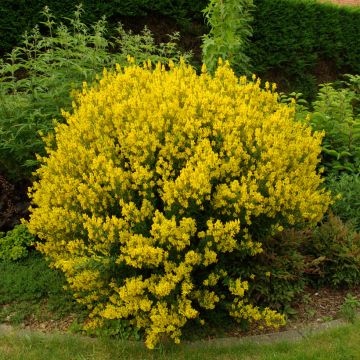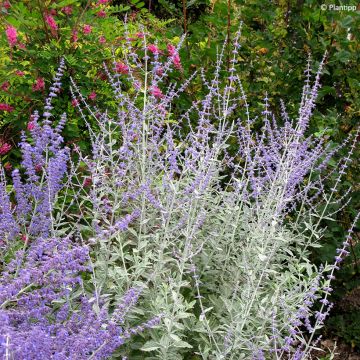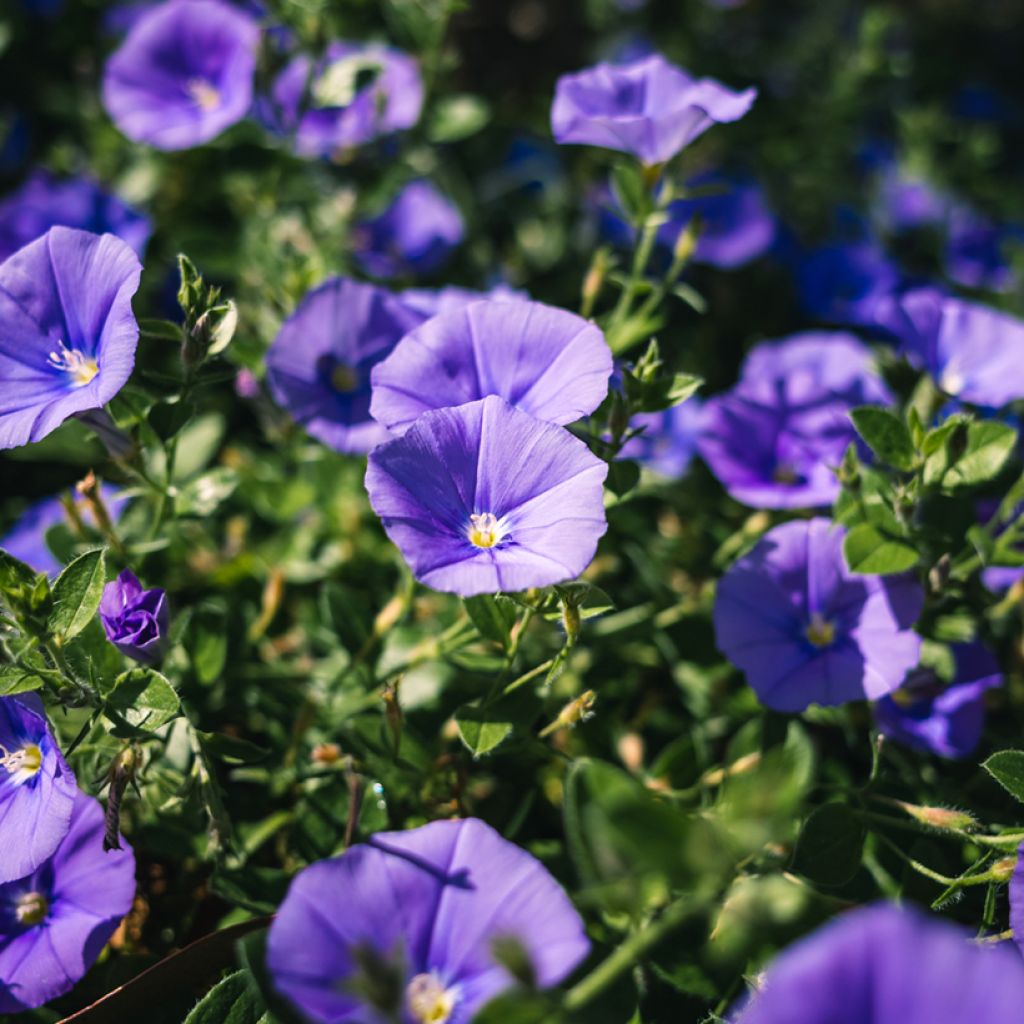

Convolvulus New Blue Moon - Liseron de Mauritanie
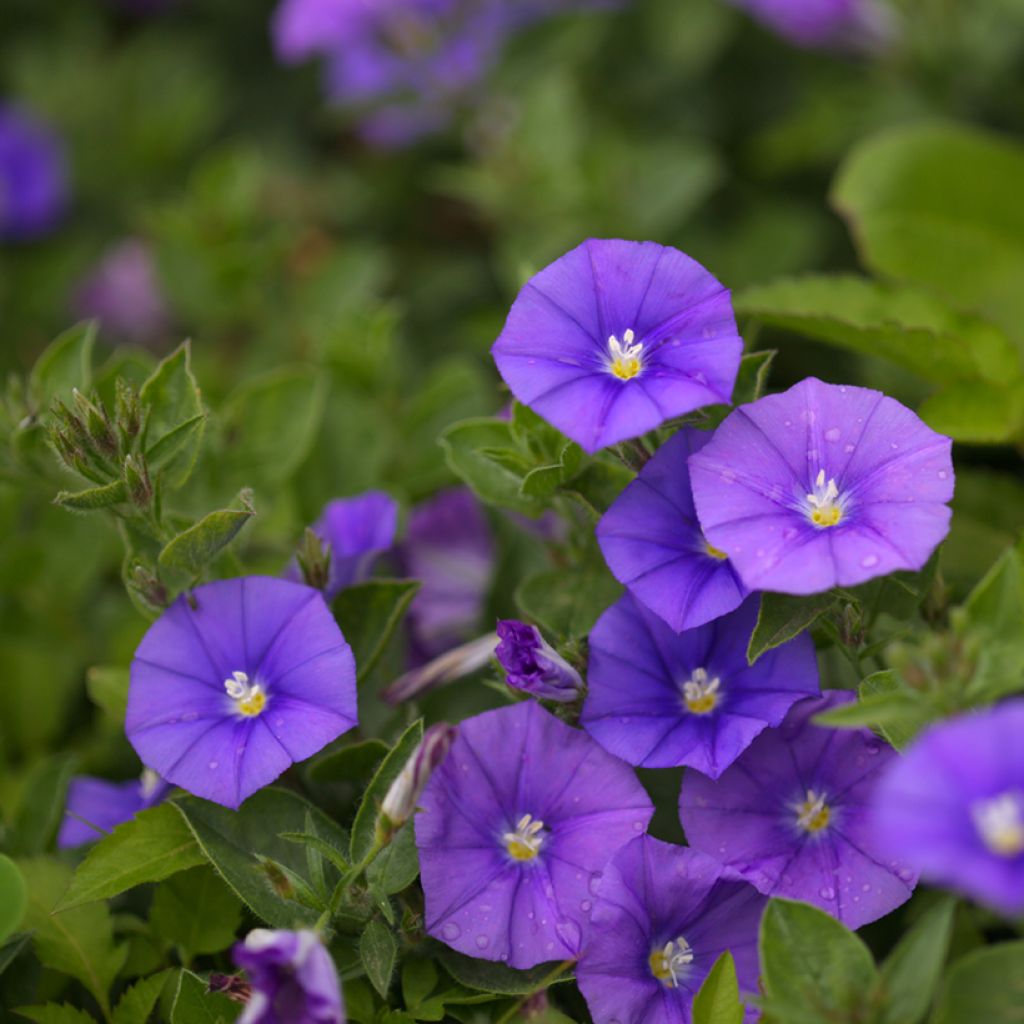

Convolvulus New Blue Moon - Liseron de Mauritanie
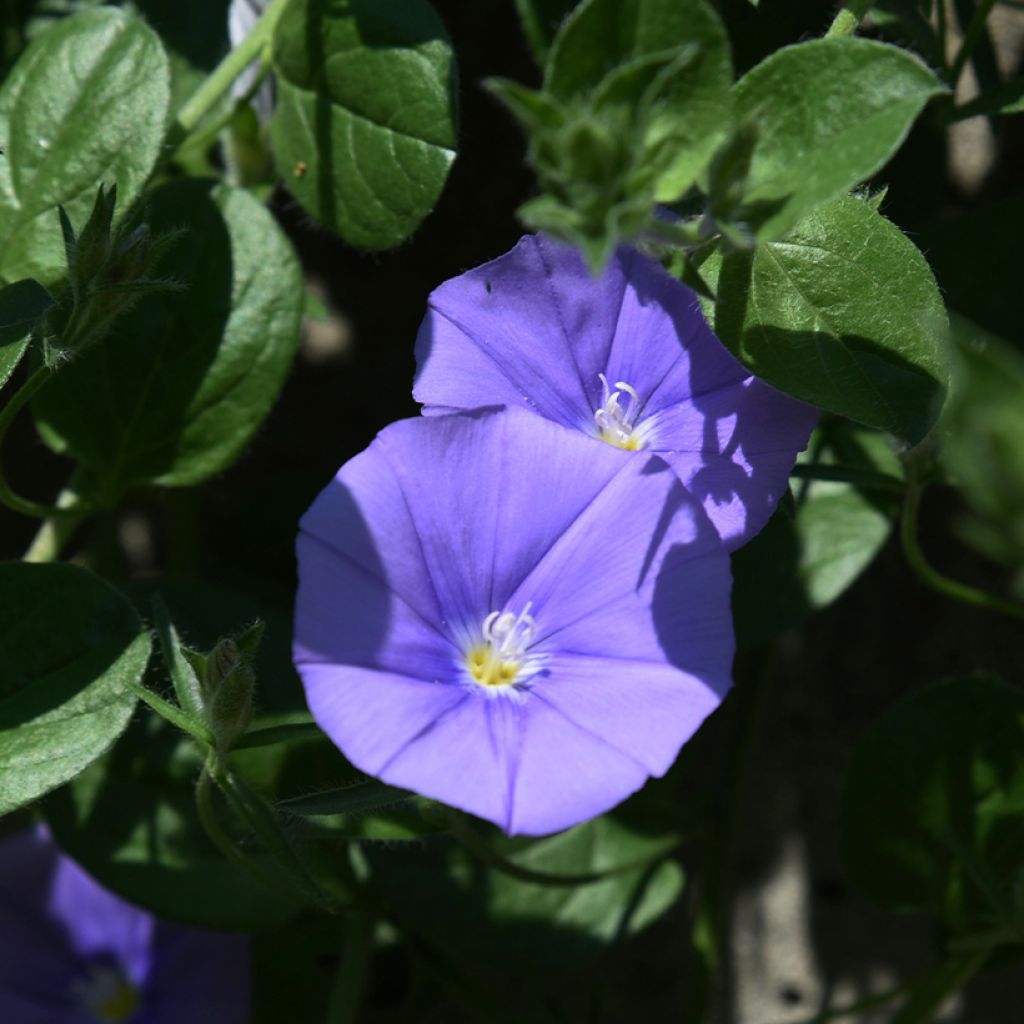

Convolvulus New Blue Moon - Liseron de Mauritanie
Convolvulus sabatius New Blue Moon
Convolvulus sabatius New Blue Moon
Blue rock bindweed, Ground blue-convolvulus, Ground Morning Glory
This plant carries a 24 months recovery warranty
More information
We guarantee the quality of our plants for a full growing cycle, and will replace at our expense any plant that fails to recover under normal climatic and planting conditions.
From €5.90 for pickup delivery and €6.90 for home delivery
Express home delivery from €8.90.
Delivery to Corse prohibited: UE law prohibits the import of this plant from mainland France to Corse as part of the fight against Xylella fastidiosa. Please accept our sincere apologies.
More information
Does this plant fit my garden?
Set up your Plantfit profile →
Description
Convolvulus sabatius 'New Blue Moon' is an undershrub ground cover with long prostrate branches, adorned with semi-evergreen small leaves. Throughout summer and into autumn, it produces large, very bright cup-shaped flowers of a deep blue with a white centre. It is a unique way to dress up rockeries, the tops of walls, and stony terrain. Native to the Mediterranean region, it is a somewhat frost-tender species that should be reserved for mild climates (especially coastal areas, as it is not afraid of salt spray), or used in annual containers and hanging baskets.
Convolvulus sabatius 'New Blue Moon' belongs to the Convolvulaceae family. It is a close cousin of hedge bindweed, which frequently invades our gardens, and like it, it bears cup-shaped flowers. But don't worry, the comparison ends there! This bindweed is native to the Moroccan coastline, but also seems to be present in Italy as it was named after the ancient Roman city of Vada Sabatia (now Vado Ligure, not far from Genoa). This beautiful species is found in rather arid coastal areas, in dry and rocky, often limestone soils. It forms a low cushion, which gradually spreads through its long creeping, somewhat lignified stems. They are adorned with small ovate, evergreen leaves in mild climates. Between June and October, it reveals its major asset: it produces hundreds of cup-shaped flowers in a lovely deep blue, with a white centre. These flowers are appreciated by many butterflies and bees. The clump is not invasive and simply crawls over a rockery or cascades from a wall, which will disappear with the abundance (and length) of this incredible flowering. It reaches a height of about 10cm (4in), with a spread of 40cm (16in), or even more in very good conditions.
Cultivating Convolvulus sabatius 'New Blue Moon' is quite easy: it simply requires full sun and perfectly well-drained rocky soil. Once established, it will never ask for a single drop of water! In fact, it dislikes excess watering. Rockeries, path borders, steps, and the tops of stone walls are ideal places to grow it. Moreover, the species tolerates sea spray very well, making it an excellent ground cover choice in mild coastal areas. However, its hardiness is quickly put to the test, and it will be difficult to keep it outdoors if temperatures frequently drop below -5°C (23°F), especially if the soil is not well-drained in winter. Even if it doesn't die, its above-ground parts will suffer if exposed to pronounced frosts. Some sources mention a resistance of -8°C (17.6°F), but this is only possible in a dry and suitable environment. Under less favourable conditions, it still remains an excellent plant for annual hanging baskets or potted plants that you can store during winter.
This beautiful species, still not widely planted, will form splendid associations with other Mediterranean plants, such as Agapanthus 'Blue Heaven' , Agave ovatifolia, Flat-leaved Eryngo, or Euphorbia 'Purple and Gold'. It will also be a delightful ground cover at the base of tall perennials, such as the hemp-leaved marsh mallow.
Report an error about the product description
Convolvulus sabatius New Blue Moon in pictures
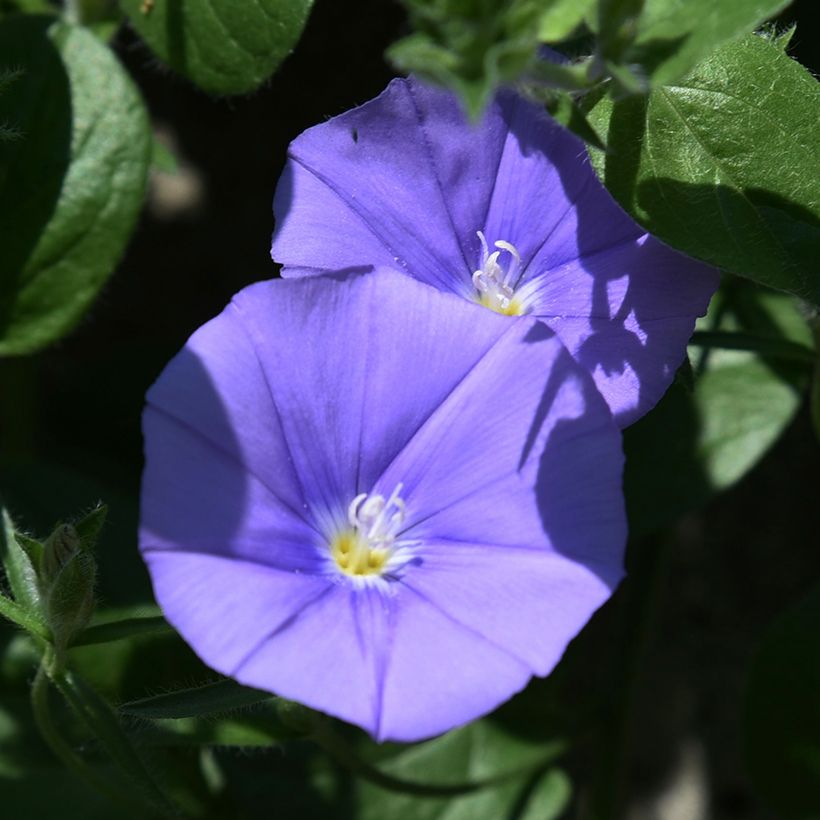

Plant habit
Flowering
Foliage
Botanical data
Convolvulus
sabatius
New Blue Moon
Convolvulaceae
Blue rock bindweed, Ground blue-convolvulus, Ground Morning Glory
Mediterranean
Other Convolvulus
Planting and care
It thrives in warm conditions, in well-drained, sandy or rocky, even limestone soil. In cold climates, it can be grown as an annual or stored away for protection.
Planting period
Intended location
Care
This item has not been reviewed yet - be the first to leave a review about it.
Shrubs for pots
Haven't found what you were looking for?
Hardiness is the lowest winter temperature a plant can endure without suffering serious damage or even dying. However, hardiness is affected by location (a sheltered area, such as a patio), protection (winter cover) and soil type (hardiness is improved by well-drained soil).

Photo Sharing Terms & Conditions
In order to encourage gardeners to interact and share their experiences, Promesse de fleurs offers various media enabling content to be uploaded onto its Site - in particular via the ‘Photo sharing’ module.
The User agrees to refrain from:
- Posting any content that is illegal, prejudicial, insulting, racist, inciteful to hatred, revisionist, contrary to public decency, that infringes on privacy or on the privacy rights of third parties, in particular the publicity rights of persons and goods, intellectual property rights, or the right to privacy.
- Submitting content on behalf of a third party;
- Impersonate the identity of a third party and/or publish any personal information about a third party;
In general, the User undertakes to refrain from any unethical behaviour.
All Content (in particular text, comments, files, images, photos, videos, creative works, etc.), which may be subject to property or intellectual property rights, image or other private rights, shall remain the property of the User, subject to the limited rights granted by the terms of the licence granted by Promesse de fleurs as stated below. Users are at liberty to publish or not to publish such Content on the Site, notably via the ‘Photo Sharing’ facility, and accept that this Content shall be made public and freely accessible, notably on the Internet.
Users further acknowledge, undertake to have ,and guarantee that they hold all necessary rights and permissions to publish such material on the Site, in particular with regard to the legislation in force pertaining to any privacy, property, intellectual property, image, or contractual rights, or rights of any other nature. By publishing such Content on the Site, Users acknowledge accepting full liability as publishers of the Content within the meaning of the law, and grant Promesse de fleurs, free of charge, an inclusive, worldwide licence for the said Content for the entire duration of its publication, including all reproduction, representation, up/downloading, displaying, performing, transmission, and storage rights.
Users also grant permission for their name to be linked to the Content and accept that this link may not always be made available.
By engaging in posting material, Users consent to their Content becoming automatically accessible on the Internet, in particular on other sites and/or blogs and/or web pages of the Promesse de fleurs site, including in particular social pages and the Promesse de fleurs catalogue.
Users may secure the removal of entrusted content free of charge by issuing a simple request via our contact form.
The flowering period indicated on our website applies to countries and regions located in USDA zone 8 (France, the United Kingdom, Ireland, the Netherlands, etc.)
It will vary according to where you live:
- In zones 9 to 10 (Italy, Spain, Greece, etc.), flowering will occur about 2 to 4 weeks earlier.
- In zones 6 to 7 (Germany, Poland, Slovenia, and lower mountainous regions), flowering will be delayed by 2 to 3 weeks.
- In zone 5 (Central Europe, Scandinavia), blooming will be delayed by 3 to 5 weeks.
In temperate climates, pruning of spring-flowering shrubs (forsythia, spireas, etc.) should be done just after flowering.
Pruning of summer-flowering shrubs (Indian Lilac, Perovskia, etc.) can be done in winter or spring.
In cold regions as well as with frost-sensitive plants, avoid pruning too early when severe frosts may still occur.
The planting period indicated on our website applies to countries and regions located in USDA zone 8 (France, United Kingdom, Ireland, Netherlands).
It will vary according to where you live:
- In Mediterranean zones (Marseille, Madrid, Milan, etc.), autumn and winter are the best planting periods.
- In continental zones (Strasbourg, Munich, Vienna, etc.), delay planting by 2 to 3 weeks in spring and bring it forward by 2 to 4 weeks in autumn.
- In mountainous regions (the Alps, Pyrenees, Carpathians, etc.), it is best to plant in late spring (May-June) or late summer (August-September).
The harvesting period indicated on our website applies to countries and regions in USDA zone 8 (France, England, Ireland, the Netherlands).
In colder areas (Scandinavia, Poland, Austria...) fruit and vegetable harvests are likely to be delayed by 3-4 weeks.
In warmer areas (Italy, Spain, Greece, etc.), harvesting will probably take place earlier, depending on weather conditions.
The sowing periods indicated on our website apply to countries and regions within USDA Zone 8 (France, UK, Ireland, Netherlands).
In colder areas (Scandinavia, Poland, Austria...), delay any outdoor sowing by 3-4 weeks, or sow under glass.
In warmer climes (Italy, Spain, Greece, etc.), bring outdoor sowing forward by a few weeks.

































